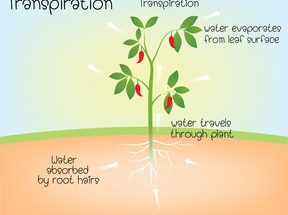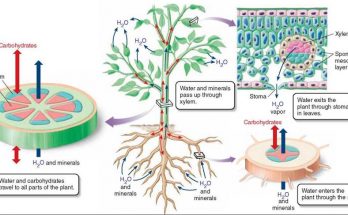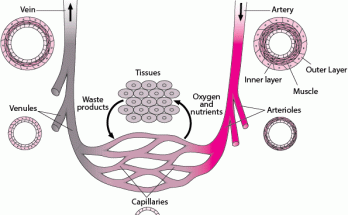Lenticular Transpiration
What is Lenticular Transpiration- Lenticular transpiration is found only in the woody branches and some fruits where lenticels occur.
Lenticular Transpiration Read MoreCBSE Class Notes Online – Classnotes123
CBSE Class Notes, Worksheets, Question Answers, Diagrams , Definitions , Diffrence between , Maths Concepts, Science Facts Online – Classnotes123
What is Lenticular Transpiration- Lenticular transpiration is found only in the woody branches and some fruits where lenticels occur.
Lenticular Transpiration Read More
Factors Affecting the Rate of Transpiration in Plants depends on 2 main reasons –
Plants Parameters
Environmental Conditions

Transpiration is the process of loss of water in the form of water vapor from the leaves and other aerial parts of the plant.
Significance of Transpiration
Cooling
Absorption of water
Creating Suction force
Transportation of water
Transportation of Minerals
Protection from heat injury

Plants transport water and minerals through specialised structures called xylem and phloem. Xylem moves water and nutrients from the roots to the rest of the plant, while phloem transports sugars and other organic compounds produced during photosynthesis to the rest of the plant. This process is essential for plant growth and survival and is facilitated by a combination of physical and chemical mechanisms.
How are Water and Minerals Transported in Plants ? Read More
3 Important Reasons for “Why is Transpiration Important for Plants?”
Cooling
Creating suction force
Distribution of water and mineral salts

4 Important Methods used by Plants to Get Rid of Excretory Products
Gaseous Waste Products
Liquid Waste Products
Solid Waste Products
Other Useful Plant Wastes

3 Major Steps of Photosynthesis
Absorption
Conversion
Reduction
Steps of Photosynthesis in Light Dependent and Light Independent Phase (Calvin Cycle) …

Define Placenta Placenta is the temporary organ for a baby’s life-support system.It contains tiny blood vessels from the fetus that pass close to the mother’s blood vessels, without the blood …
What is Placenta – Class 10th Read More
The placenta is a disc-like tissue that develops between the uterine wall and embryo allowing the diffusion of nourishment from the mother’s blood to the growing fetus and waste disposal from the fetus to the mother. It receives oxygen, glucose, amino acids, lipids, vitamins, mineral ions and antibodies from the mother’s blood and removes carbon dioxide and urea from the fetal blood. The umbilical cord containing blood vessels connects the placenta to the fetus. It aloows the exchange of nutrients and waste products.
How does the Embryo get Nourishment Inside the Mother’s Body Read More
Blood vessels are the intricate network of tubes that transport blood throughout the body. This article provides an overview of the different types of blood vessels – arteries, veins and capillaries, list of blood vessels entering and leaving the heart, liver, and kidney, functions, layers and blood pressure regulation of blood vessels. Additionally, common diseases and disorders of blood vessels such as atherosclerosis, hypertension and varicose veins are described with their causes, symptoms, and treatments.
Blood Vessels -Definition , Types, Functions, Layers, Blood Pressure , Diseases and Disorders Read More